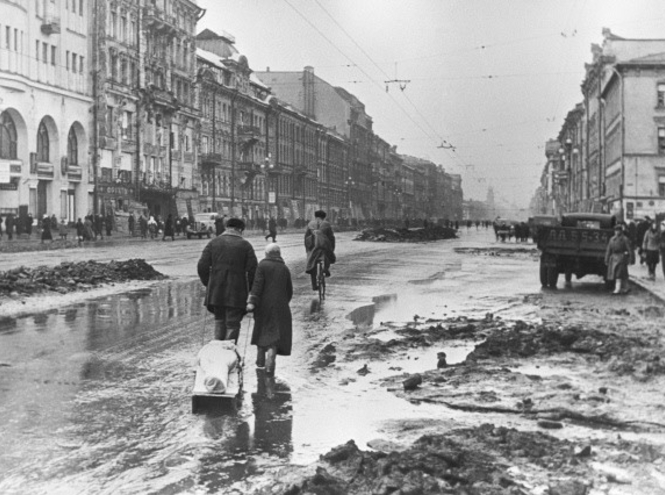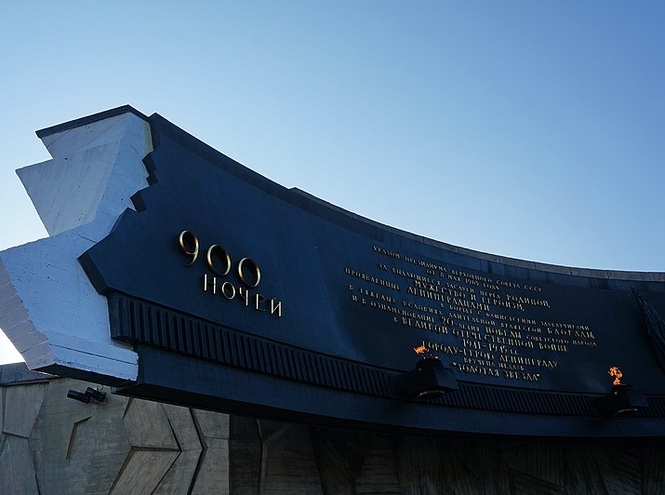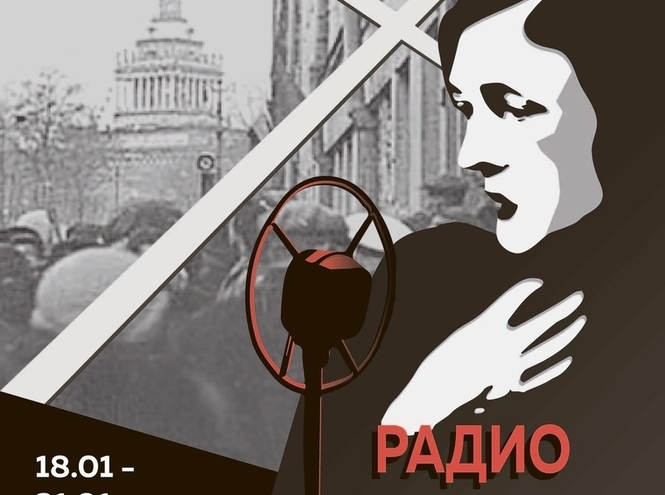80th anniversary of breaking of the siege of Leningrad
January 18 is a special date for residents of St Petersburg. Thanks to the successful offensive operation "Spark", it was on this day, 80 years ago, that the siege of Leningrad was broken, and the residents' faith in the complete liberation of the city was strengthened.
Almost 900 days and nights, from September 1941 to January 1944, lasted the most difficult period in the life of Leningrad during the Great Patriotic War. The siege winter of 1941–1942 was the most difficult and tragic in the history of the city. More than 4 thousand people died every day from hunger, cold and bombing. The only way that food and goods were delivered and the wounded, women, the elderly and children were taken out was called "The Road of Life". It was a transport highway through Lake Ladoga, connecting besieged Leningrad with the country. "The Road of Life" continued to operate in the winter of 1942-1943. At that time, it was used not only to secure the city, but also in preparation for the offensive to break the siege of Leningrad.
The Red Army made two attempts to unblock the city in 1942, but unsuccessfully. A new plan for the deblocking of Leningrad was approved at the end of the year. Joseph Stalin proposed the name of the operation – "Spark", explaining that all attempts to break the siege ended in failure, and now a "flame" should ignite from this "spark".
The offensive began on January 12: Soviet bombers launched a massive attack on enemy positions at night. Protracted fierce fighting lasted until January 17. By January 18, the troops of the Leningrad and Volkhov fronts, advancing on the city from two sides, joined in the area of Workers' settlements No. 1 and 5. A little later on the same day, the entire southern coast of Lake Ladoga was cleared of the enemy, and Shlisselburg was also liberated. Thus, January 18, 1943 became the day of the breakthrough of the siege of Leningrad. The corridor along the coast made it possible to connect Leningrad with the rest of the country by land, replacing the ice crossing – "The Road of Life". 33 kilometers of the railway were laid along the southern shore of Lake Ladoga in seventeen days. The first trains started running on this road on February 6.
The situation on the Leningrad Front improved with the breakthrough of the siege. The complete siege ring was removed a year later - on January 27, 1944. This day is the Day of Military Glory of Russia. January 18, 1943 has forever gone down in history as an example of the great fortitude and patriotism of the Russian people.
SPbSUT keeps the memory of those terrible events and the people who heroically defended our city. The collection "The fate of Leningrad embodied everything" was published with the help of the University staff who lived in besieged Leningrad.
The exhibition "Radio of Besieged Leningrad" will open today at the A.S. Popov Central Museum of Communications. Visitors will be told how the radio was organized in the besieged city, which played a huge role in ensuring the survival of the city and maintaining the mental strength of citizens.
The exhibition will last until January 31 in the second atrium of the museum.
Photo materials:
1. RIA Novosti archive, image #324 / Boris Kudoyarov / CC-BY-SA 3.0, CC BY-SA 3.0, via Wikimedia Commons
2. Reshinna, CC BY-SA 4.0, via Wikimedia Commons
3. Poster for the exhibition at the A. S. Popov Central Museum of Communications
 16 april
Foreign students of SPbSUT learned the history of space exploration
16 april
Foreign students of SPbSUT learned the history of space exploration
 15 april
New members of the SPbSUT International Students Community
15 april
New members of the SPbSUT International Students Community
 10 april
Lecture for Vietnamese students
10 april
Lecture for Vietnamese students
 1 april
SPbSUT and Myanmar are developing cooperation
1 april
SPbSUT and Myanmar are developing cooperation
 20 march
SPbSUT – for applicants from Kyrgyzstan
20 march
SPbSUT – for applicants from Kyrgyzstan
 15 march
SPbSUT at the World Youth Festival
15 march
SPbSUT at the World Youth Festival
 13 march
The International student club "Signal" said goodbye to winter
13 march
The International student club "Signal" said goodbye to winter
 28 february
Foreign students of SPbSUT are among the best in the creative competition
28 february
Foreign students of SPbSUT are among the best in the creative competition
 9 february
Foreign students learned about the culture of Slavic peoples
9 february
Foreign students learned about the culture of Slavic peoples
 1 february
SPbSUT is a participant of the fair of Russian higher education in Sri Lanka
1 february
SPbSUT is a participant of the fair of Russian higher education in Sri Lanka
 26 january
General Chairman of the ICACT-2024 conference welcomes the participants
26 january
General Chairman of the ICACT-2024 conference welcomes the participants
 25 january
International Student Club "Signal" held a new meeting
25 january
International Student Club "Signal" held a new meeting
 19 january
Foreign students got acquainted with St Petersburg
19 january
Foreign students got acquainted with St Petersburg
 26 december
2023 Student Victories
26 december
2023 Student Victories
 22 december
The Day of Winter at SPbSUT
22 december
The Day of Winter at SPbSUT
 22 december
From Algeria to Russia: Friendship Day was held at SPbSUT
22 december
From Algeria to Russia: Friendship Day was held at SPbSUT
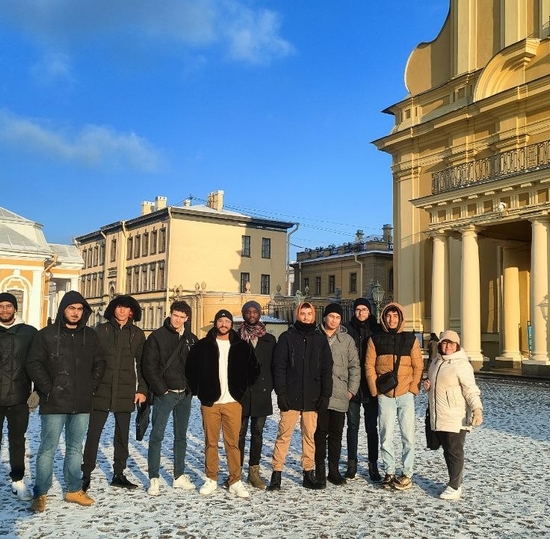 27 november
Foreign students of Preparatory Course get acquainted with SPbSUT and St Petersburg
27 november
Foreign students of Preparatory Course get acquainted with SPbSUT and St Petersburg
 15 november
International Festival of National Cultures
15 november
International Festival of National Cultures
 23 october
The best foreign students were awarded at SPbSUT
23 october
The best foreign students were awarded at SPbSUT
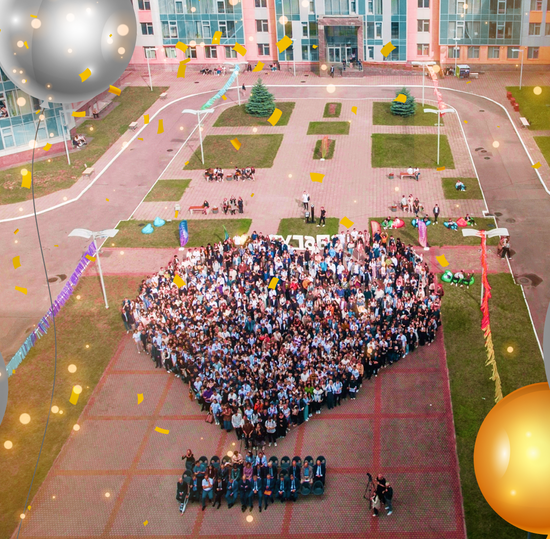 13 october
SPbSUT – 93! Congratulations from Rector Ruslan Kirichek
13 october
SPbSUT – 93! Congratulations from Rector Ruslan Kirichek





